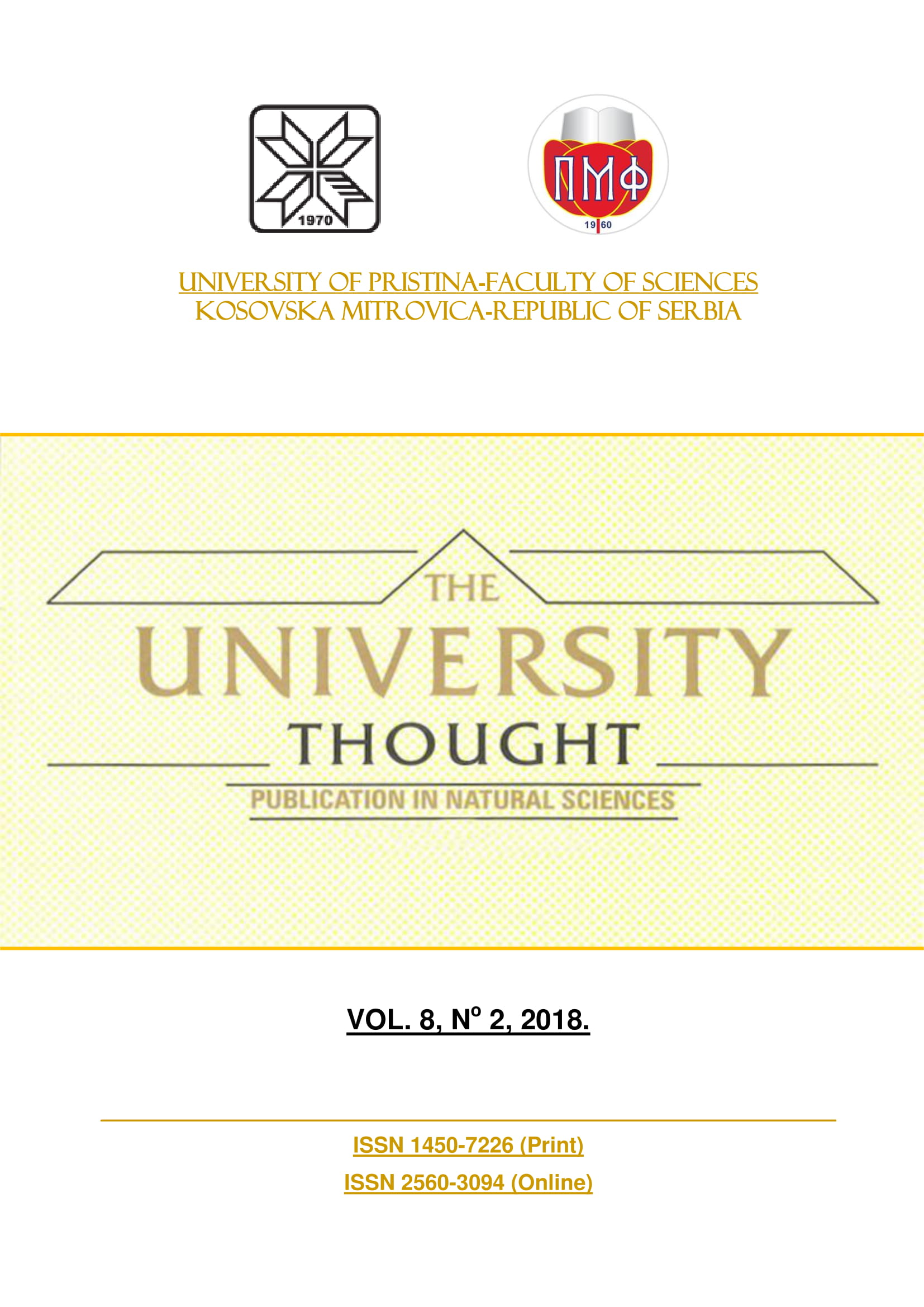SIMULATION OF CHEMICAL ACCIDENTS WITH ACETYLENE IN „MESSER TEHNOGAS“ KRALJEVO PLANT BY „ALOHA“ SOFTWARE PROGRAM
Abstract
Chemical plants are generally associated with potentially high risk of chemical accidents. During chemical accidents hazardous substances jeopardize human lives, destroy material assests and degrade natural environment. The release of flammable and explosive gases or liquids especially poses a significant threat to the environment. This paper introduces the simulation of a chemical accident caused by an uncontrolled acetylene cylinder release in the warehouse of Messer Tehnogas Kraljevo chemical plant. The simulation was performed by ALOHA program package which defines a possible accident development and determines threat and safety zones. The assessment of potential scenarios is based on physico-chemical properties of the substance causing the accident. This paper discusses accident situations occurring under the most unfavorable atmospheric conditions.
References
Abbasi, T., Ramasamy, E.V., Khan, F.I., & Abbasi, S.A. 2013. Regional EIA and Risk Assessment in a Fast Developing Country. New York: Nova Science. pp. x+433.
Bogdanović, M. 2008. Faze nastajanja akcidenata i mere zaštite od posledica hemijskih akcidenata. Facta universitatis - series: Working and Living Enviromental Protection; Niš, Vol. 5, No 1, pp. 89-95.
Bogdanović, M. 2009. Widely known chemical accidents. Facta universitatis -series: Working and Living Environmental Protection; Niš, Vol. 6, No 1, pp. 65-71.
Carver, F.W.S., Smith, C.M., & Webster, G.A. 1972. The explosive decomposition of acetylene in pipelines. In I.Chem.E. Symposium Instn chem. Engrs, London. Series No. 33.
Crowl, D.A., & Louvar, J.F. 2011. Chemical Process Safety: Fundamentals with Applications. Boston: Pearson Education.
Cvetanović, S. 2015. Integral model of systemic approach to risk management of chemical accidents at the local level. Niš: Faculty of Occupational Safety. Doctoral dissertation.
El, H.M., Mustapha, S., Choong, T.S.Y., Abdul, R.S., Kadir, S.A.S.A., & Abdul, R.Z. 2008. Rapid analysis of risk assessment using developed simulation of chemical industrial accidents software package. International Journal of Environmental Science & Technology, 5(1), pp. 53-64. doi:10.1007/bf03325997
Huang, D., Zhang, Q., Li, M., & Liu, M. 2015. Example application of risk assessment technology based on acute poisoning accident dispersion simulation. In 5th International Conference on Risk Analysis and Crisis Response, RACR; Tangier; Morocco. Pages 349-357.
Jovanović, T. 2013. The analysis and the simulation of fire risk in the facility for fruit treatment "Pobeda" in Prokuplje. Safety Engineering, pp. 183-187.
Khan, F.I., & Abbasi, S. 1998. Techniques and methodologies for risk analysis in chemical process industries. Journal of Loss Prevention in the Process Industries, 11(4), pp. 261-277. Discovery Publishing House, New Delhi. doi:10.1016/s0950-4230(97)00051-x
Khan F.I., & Abbasi S.A. 1998. Domiefect: (domino effect) a user-friendly software for domino effect-analysis. Environmental Modelling and Software, 13(2), pp. 163-177. doi:10.1016/s1364-8152(98)00018-8
Khan, F.I., & Abbasi, S. 2001. An assessment of the likelihood of occurrence, and the damage potential of domino effect (chain of accidents) in a typical cluster of industries. Journal of Loss Prevention in the Process Industries, 14(4), pp. 283-306. doi:10.1016/s0950-4230(00)00048-6
Lakshmanan, T., & Nagarajan, G. 2010. Experimental investigation of timed manifold injection of acetylene in direct injection diesel engine in dual fuel mode. Energy, 35(8), pp. 3172-3178. doi:10.1016/j.energy.2010.03.055
Lakshmanan, T., & Nagarajan, G. 2011. Study on using acetylene in dual fuel mode with exhaust gas recirculation. Energy, 36(5), pp. 3547-3553. doi:10.1016/j.energy.2011.03.061
Mannan, S. 2013. Lees' Process Safety Essentials: Hazard Identification, Assessment and Control. Butterworth-Heinemann. book.
Sanchez, E.Y., Represa, S., Mellado, D., Balbi, K.B., Acquesta, A.D., Colman, L.J.E., & Porta, A.A. 2018. Risk analysis of technological hazards: Simulation of scenarios and application of a local vulnerability index. Journal of Hazardous Materials, 352, pp. 101-110. doi:10.1016/j.jhazmat.2018.03.034
Sanders, R.E. 2015. Chemical Process Safety: Learning from Case Histories.Butterworth-Heinemann, book.
Sarkar, S. 1990. Fuels and combustion.Mumbai, India: Orient Longman Limited.
Sengupta, A., Bandyopadhyay, D., van Westen, C.J., & van der Veen, A. 2016. An evaluation of risk assessment framework for industrial accidents in India. Journal of Loss Prevention in the Process Industries, 41, pp. 295-302. doi:10.1016/j.jlp.2015.12.012
Shao, H., & Duan, G. 2012. Risk Quantitative Calculation and ALOHA Simulation on the Leakage Accident of Natural Gas Power Plant. Procedia Engineering, 45, pp. 352-359. doi:10.1016/j.proeng.2012.08.170
Varma, R., & Varma, D.R. 2005. The Bhopal Disaster of 1984. Bulletin of Science, Technology & Society, 25(1), pp. 37-45. doi:10.1177/0270467604273822
Authors retain copyright and grant the journal right of first publication with the work simultaneously licensed under a Creative Commons Attribution License that allows others to share the work with an acknowledgement of the work's authorship and initial publication in this journal.

